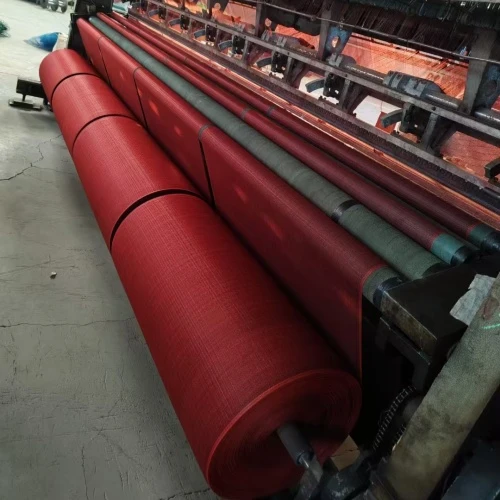-
 Afrikaans
Afrikaans -
 Albanian
Albanian -
 Amharic
Amharic -
 Arabic
Arabic -
 Armenian
Armenian -
 Azerbaijani
Azerbaijani -
 Basque
Basque -
 Belarusian
Belarusian -
 Bengali
Bengali -
 Bosnian
Bosnian -
 Bulgarian
Bulgarian -
 Catalan
Catalan -
 Cebuano
Cebuano -
 China
China -
 Corsican
Corsican -
 Croatian
Croatian -
 Czech
Czech -
 Danish
Danish -
 Dutch
Dutch -
 English
English -
 Esperanto
Esperanto -
 Estonian
Estonian -
 Finnish
Finnish -
 French
French -
 Frisian
Frisian -
 Galician
Galician -
 Georgian
Georgian -
 German
German -
 Greek
Greek -
 Gujarati
Gujarati -
 Haitian Creole
Haitian Creole -
 hausa
hausa -
 hawaiian
hawaiian -
 Hebrew
Hebrew -
 Hindi
Hindi -
 Miao
Miao -
 Hungarian
Hungarian -
 Icelandic
Icelandic -
 igbo
igbo -
 Indonesian
Indonesian -
 irish
irish -
 Italian
Italian -
 Japanese
Japanese -
 Javanese
Javanese -
 Kannada
Kannada -
 kazakh
kazakh -
 Khmer
Khmer -
 Rwandese
Rwandese -
 Korean
Korean -
 Kurdish
Kurdish -
 Kyrgyz
Kyrgyz -
 Lao
Lao -
 Latin
Latin -
 Latvian
Latvian -
 Lithuanian
Lithuanian -
 Luxembourgish
Luxembourgish -
 Macedonian
Macedonian -
 Malgashi
Malgashi -
 Malay
Malay -
 Malayalam
Malayalam -
 Maltese
Maltese -
 Maori
Maori -
 Marathi
Marathi -
 Mongolian
Mongolian -
 Myanmar
Myanmar -
 Nepali
Nepali -
 Norwegian
Norwegian -
 Norwegian
Norwegian -
 Occitan
Occitan -
 Pashto
Pashto -
 Persian
Persian -
 Polish
Polish -
 Portuguese
Portuguese -
 Punjabi
Punjabi -
 Romanian
Romanian -
 Russian
Russian -
 Samoan
Samoan -
 Scottish Gaelic
Scottish Gaelic -
 Serbian
Serbian -
 Sesotho
Sesotho -
 Shona
Shona -
 Sindhi
Sindhi -
 Sinhala
Sinhala -
 Slovak
Slovak -
 Slovenian
Slovenian -
 Somali
Somali -
 Spanish
Spanish -
 Sundanese
Sundanese -
 Swahili
Swahili -
 Swedish
Swedish -
 Tagalog
Tagalog -
 Tajik
Tajik -
 Tamil
Tamil -
 Tatar
Tatar -
 Telugu
Telugu -
 Thai
Thai -
 Turkish
Turkish -
 Turkmen
Turkmen -
 Ukrainian
Ukrainian -
 Urdu
Urdu -
 Uighur
Uighur -
 Uzbek
Uzbek -
 Vietnamese
Vietnamese -
 Welsh
Welsh -
 Bantu
Bantu -
 Yiddish
Yiddish -
 Yoruba
Yoruba -
 Zulu
Zulu
Exploring the Versatility and Benefits of Nylon Net Materials in Various Applications
The Versatility of Nylon Net Material
Nylon net material is a remarkable fabric that has seen a vast array of applications across different industries due to its unique properties. Originally developed in the 1930s, nylon revolutionized the textile industry with its strength, elasticity, and resistance to abrasion. The emergence of nylon net further broadened the potential uses of this synthetic fiber, making it a staple in both industrial and consumer markets.
One of the most distinct characteristics of nylon net is its lightweight yet durable nature. The open weave structure of the net allows for breathability while maintaining significant strength, which makes it ideal for various applications. Whether it's used in fishing nets, sports equipment, or even in fashion, the nylon net proves itself to be both functional and aesthetically pleasing.
In the realm of sports and outdoor activities, nylon net material is commonly used in equipment such as nets for tennis, badminton, and volleyball. The durability and weather-resistant properties of nylon allow these nets to withstand the rigors of outdoor sports, providing longevity and reliability. Additionally, the lightweight nature of nylon nets makes them easy to transport and set up, allowing athletes and recreational users alike to enjoy their activities without the encumbrance of heavy equipment.
Another prominent application of nylon net material is in the fishing industry. Fishing nets made from nylon are favored for their superior strength and resistance to rot compared to traditional natural fibers. The ability to cast and retrieve these nets with ease makes them invaluable tools for fishermen. Furthermore, the functionality of nylon nets extends to aquaculture, where they are used to create fish enclosures and protect stocks from predators, emphasizing the versatility of nylon in both recreational and commercial fishing.
nylon net material

Beyond sporting and industrial uses, nylon netting has found its way into the fashion industry as well. Designers often utilize nylon net material in garments, creating unique textures and styles that appeal to contemporary fashion trends. The dramatic, sheer appearance of nylon net can add layers to garments, making them visually captivating. From formal wear to casual outfits, the integration of nylon net into fashion demonstrates its adaptability as a textile.
In addition to its versatility in applications, nylon net material is also favored for its ease of maintenance. It can be easily cleaned and dries quickly, making it a practical choice for everyday use. Moreover, nylon is resistant to mold and mildew, which enhances its usability in environments where moisture is present. This ease of care contributes to its popularity in both home furnishings, such as curtains and upholstery, and outdoor gear, such as backpacks and tents.
As we continue to innovate and explore new technological advancements in materials, the potential for nylon net material seems boundless. With research focusing on enhancing its eco-friendliness and sustainability—such as creating recycled nylon products—this material is likely to remain relevant in our ever-evolving world.
In conclusion, nylon net material is a testament to the capabilities of modern textiles. From sports and fishing gear to fashion and everyday home use, its unique properties ensure that it will continue to play a significant role in various fields. The blend of strength, durability, and versatility makes nylon net an indispensable resource that serves countless functions, solidifying its status as a key player in the textile industry for years to come.
-
Shipping Plastic Bags for Every NeedNewsJul.24,2025
-
Safety Netting: Your Shield in ConstructionNewsJul.24,2025
-
Plastic Mesh Netting for Everyday UseNewsJul.24,2025
-
Nylon Netting for Every UseNewsJul.24,2025
-
Mesh Breeder Box for Fish TanksNewsJul.24,2025
-
Expanded Steel Mesh Offers Durable VersatilityNewsJul.24,2025











